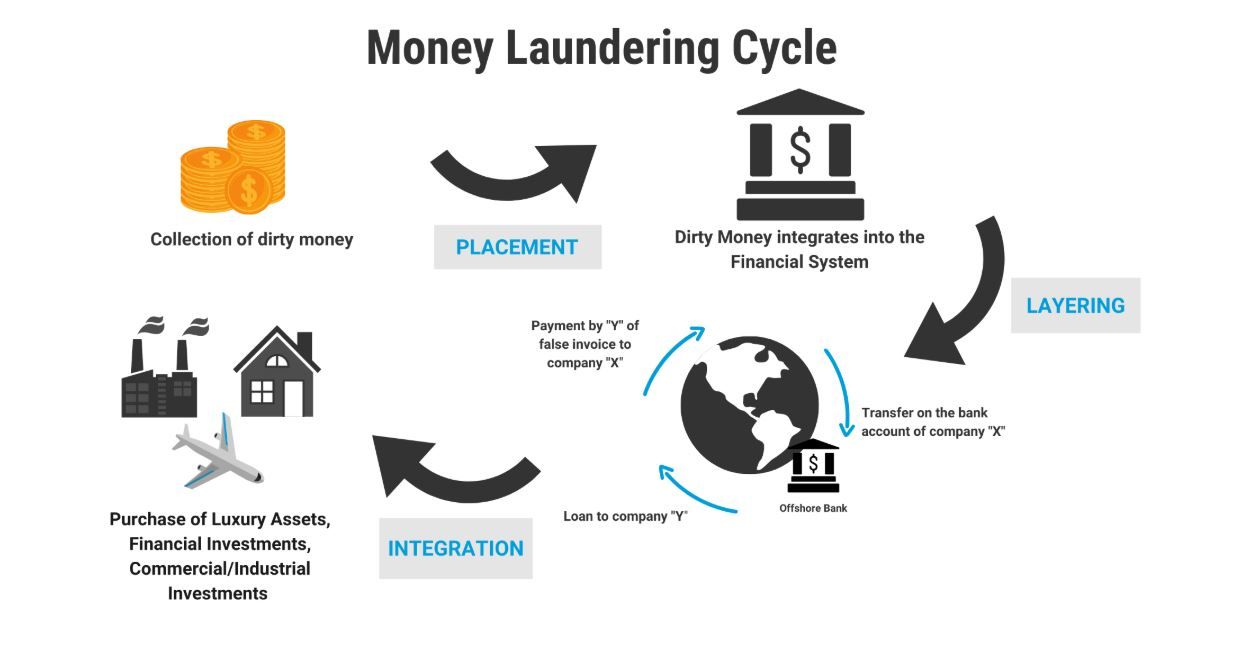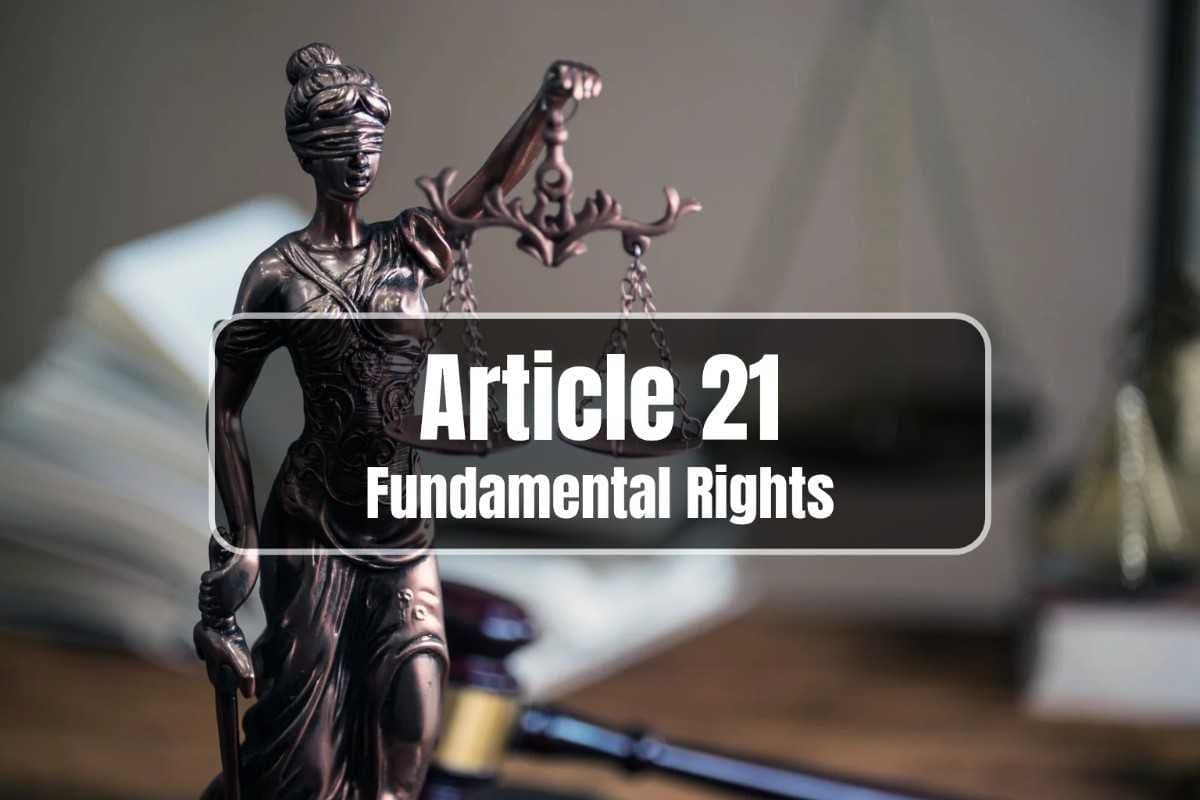Money Laundering UPSC Notes: Meaning, Process, Laws, and Measures
Nov, 2025
•4 min read
Money laundering is one of the most significant financial crimes threatening India's economic integrity, financial system stability, and national security.
Understanding its background, legislative framework, objectives, and challenges is crucial for the UPSC Prelims and Mains syllabus (GS Paper II) coverage.
What is Money Laundering?
Money laundering is the process of converting illegally obtained funds, also known as black money, into legitimate funds. This financial crime involves hiding the true source of money that comes from illegal activities such as corruption, drug trafficking, smuggling, tax evasion, and other forms of organised crime.
Key Facts About Money Laundering:
- Money laundering accounts for approximately 2 to 5% of global GDP annually, amounting to billions of dollars worldwide.
- In India, the Prevention of Money Laundering Act (PMLA) was enacted in 2002 and came into force on July 1, 2005.
- The Enforcement Directorate investigates money laundering cases under the PMLA in India.
- Financial Intelligence Unit-India (FIU-IND) was established in November 2004 as the central agency responsible for receiving and analysing suspicious financial transactions.
- India became a full member of the Financial Action Task Force (FATF) in June 2010 as its 34th member country.
- As of December 2024, the Enforcement Directorate has attached assets worth ₹1.45 lakh crore under PMLA.
Understanding the Process of Money Laundering
The money laundering process involves disguising the origins of illegally obtained money through a series of complex transactions to make it appear legitimate.

1. Placement:
- This is the first stage where illicit funds are introduced into the legitimate financial system.
- Criminals deposit cash into banks, purchase monetary instruments, or use money transfer services to channel illegal funds into financial channels.
- Breaking large sums into smaller deposits to avoid detection.
2. Layering:
- This stage involves creating multiple layers of complex financial transactions to obscure the origin of the funds and confuse authorities.
- The goal is to distance the money from its illegal source through sophisticated transactions.
- Investing in stocks, bonds, and other financial instruments.
3. Integration:
- In this final stage, the laundered money is reintegrated into the legitimate economy, making it appear as lawfully earned income.
- At this point, criminals can use the funds freely without fear of detection.
- Purchasing real estate properties.
- Buying luxury goods like jewellery, cars, and artwork.
Also read: Lokpal and Lokayukta: UPSC Polity Notes
Common Methods of Money Laundering
Criminals employ various sophisticated techniques to launder illegal money through different channels.
1. Hawala System:
- An informal money transfer system that operates outside traditional banking channels, widely used in India and other countries.
- Money is transferred through a network of hawala operators without the physical movement of currency.
- Operates without documentation and paper trails.
- Difficult to trace and regulate.
2. Smurfing or Structuring:
- Breaking down large amounts of illegal money into smaller transactions below reporting thresholds to avoid detection by financial institutions.
- Multiple small deposits were made across different bank accounts.
- Transactions kept below regulatory limits.
- Uses multiple individuals to make deposits.
3. Shell Companies:
- Fictitious business entities created solely to launder money, with no real business operations.
- These companies exist only on paper to provide a facade of legitimate business activity.
- Created to hide the true ownership of funds.
4. Real Estate Transactions:
- Purchasing properties using illegal funds and manipulating property values to launder money.
- Under-valuation or over-valuation of properties.
- Using cash for real estate purchases.
- Selling properties at inflated prices to generate clean funds.
5. Trade-Based Money Laundering (TBML):
- Manipulating international trade transactions to disguise the movement of illicit funds.
- Over-invoicing or under-invoicing of goods.
- False documentation of shipments.
- Multiple invoicing for the same goods.
6. Casino and Gambling Operations:
- Using gambling establishments to convert illegal cash into apparent gambling winnings.
- Purchasing chips with illicit funds.
- Minimal gambling followed by cashing out.
7. Cash-Intensive Businesses:
- Using businesses like restaurants, car washes, and retail stores to mix illegal funds with legitimate earnings.
- Co-mingling illegal profits with legal business revenues.
- Inflating business income reports.
Must read: International Anti-Corruption Day
Impact of Money Laundering
Money laundering has severe and far-reaching consequences on the economy, society, and national security.
- Undermines financial system integrity and destabilises markets.
- Reduces government tax revenue, limiting funds for public services.
- Facilitates organised crime and funds terrorist activities.
- Encourages corruption and weakens the governance and rule of law.
- Erodes public trust and fosters political instability.
- These impacts collectively threaten economic growth, social equity, and national security, making effective anti-money laundering measures crucial.
Also read: Monetary Policy in India: Complete Notes for UPSC Indian Economy
Anti-Money Laundering Measures in India
India has developed a comprehensive legal and institutional framework to combat money laundering effectively.
1. Prevention of Money Laundering Act (PMLA), 2002: The core legislation enacted to prevent money laundering and provide for confiscation of property derived from criminal activities. The Act came into force on July 1, 2005.
- Defines money laundering as a criminal offence punishable with rigorous imprisonment.
- Empowers authorities to attach, seize, and confiscate properties involved in money laundering.
- PMLA Amendment Act, 2012: Strengthened the original Act by adding the concept of 'reporting entities' and removing the upper limit on fines.
2. Financial Intelligence Unit-India (FIU-IND): Established in November 2004 as an independent body reporting directly to the Economic Intelligence Council, headed by the Finance Minister.
- Receives and analyses Cash Transaction Reports (CTRs), Suspicious Transaction Reports (STRs), Cross Border Wire Transfer Reports, and other financial intelligence.
- Acts as the central repository for financial transaction data.
3. Enforcement Directorate (ED): The primary agency responsible for investigating money laundering offences under PMLA.
- Works under the Department of Revenue, Ministry of Finance.
- Conducts investigations into money laundering cases.
- Has the power to attach and confiscate properties derived from crime.
Practice MCQ on Money Laundering
QUESTION 1
Easy
Which are the three main stages of money laundering?
Select an option to attempt
Anti-Money Laundering Measures at the Global Level
The international community has established comprehensive frameworks and cooperation mechanisms to combat money laundering across borders.
1. Financial Action Task Force (FATF):
- An intergovernmental body established in 1989 by the G7 countries to set global standards for combating money laundering, terrorist financing, and proliferation financing.
- Currently has 39 member countries and jurisdictions.
- Issues 40 Recommendations that serve as international standards for AML/CFT compliance.
- Maintains blacklist and greylist of non-compliant jurisdictions.
2. United Nations Convention Against Corruption (UNCAC):
- The only legally binding international anti-corruption multilateral treaty, adopted in October 2003 and entered into force in December 2005.
- 192 countries are parties to the convention as of 2024.
- Addresses money laundering as part of broader anti-corruption efforts.
- Provides a framework for international cooperation in criminal matters.
3. Basel Committee on Banking Supervision:
- Formulates supervisory standards and guidelines for banking supervision worldwide
- Issue guidelines on sound management of risks related to money laundering and financing of terrorism.
- Promotes the implementation of sound AML/CFT policies in banks.
- Establishes Know Your Customer (KYC) standards for banks.
4. International Cooperation Mechanisms:
- Mutual Legal Assistance Treaties: Facilitate cross-border investigations and evidence sharing between countries.
- Extradition Agreements: Enable the prosecution of money launderers across jurisdictions.
- Information Sharing Networks: Financial Intelligence Units worldwide share intelligence through the Egmont Group platform.
UPSC Mains Practice Question
What are the major challenges faced by India in combating money laundering? Suggest effective measures to overcome these challenges.
Evaluate Your Answers nowWay Forward
Strengthening the fight against money laundering requires coordinated efforts across technology, regulation, awareness, and international cooperation.
- Educate citizens, particularly vulnerable populations, about the risks of money laundering and the associated red flags.
- Deploy Artificial Intelligence and Machine Learning for transaction monitoring and pattern detection.
- Enforce strict Know Your Customer (KYC) norms across all financial entities.
- Provide regular training to bank employees and compliance officers to spot suspicious activities.
Start Your UPSC Journey Smarter with SuperKalam
Crack UPSC with AI-powered guidance, personalised feedback, NCERT MCQs and expert-curated notes, all in one platform.
Join SuperKalam Today and take your preparation to the next level!
Crack UPSC with your Personal AI Mentor
An AI-powered ecosystem to learn, practice, and evaluate with discipline
Download the SuperKalam App Now
![PM MUDRA Yojana 2025: Shishu to Tarun [UPSC Notes]](/_next/image?url=https%3A%2F%2Fblog-media.superkalam.com%2FPM_Mudra_Yojana_e5ffe37cf1.jpeg&w=3840&q=75)
